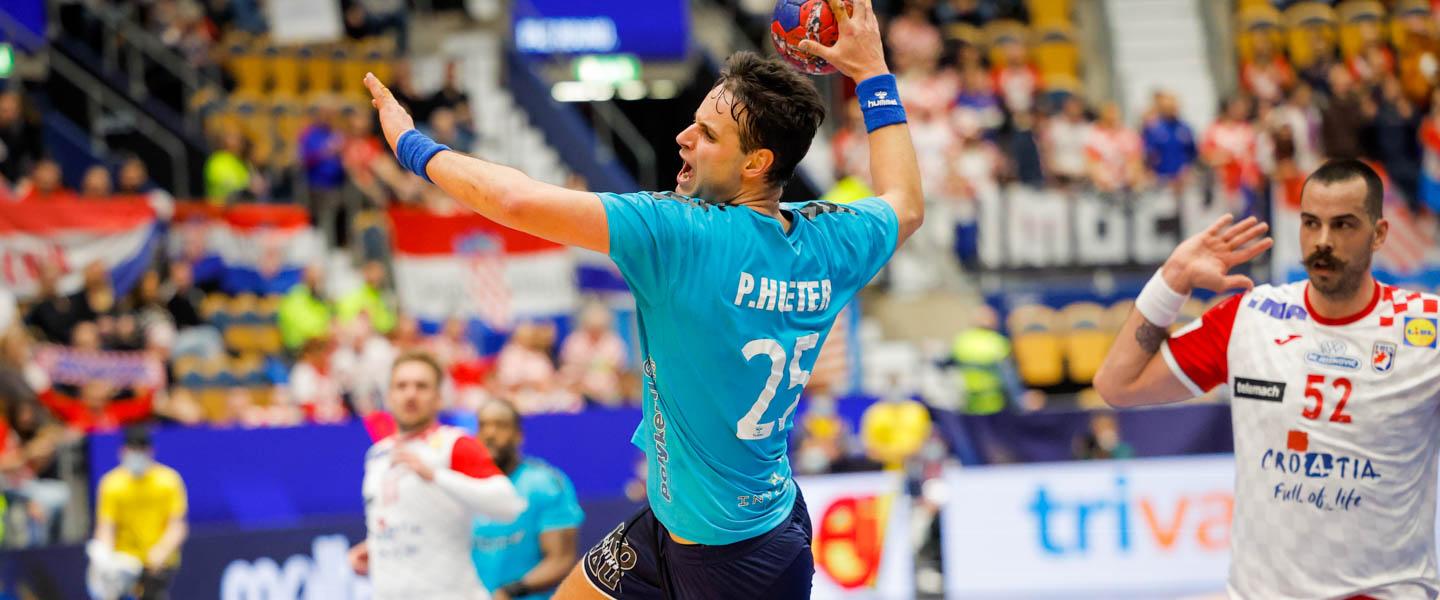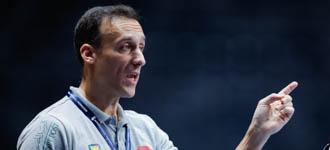Six talking points after the preliminary round at Poland/Sweden 2023
18 Jan. 2023

48 matches are now played at the 2023 IHF Men’s World Championship, with 24 teams progressing to the main round, while eight are heading to the President’s Cup. It is high time we get into what has happened over the first week of handball at Poland/Sweden 2023, talking about handball, numbers and trends.
Five continents represented in the main round
With the conclusion of the preliminary round, 24 teams have progressed to the next phase of the competition, from five different confederations. The EHF, SCAHC, NACHC, CAHB and AHF are represented by different teams in the main round, with 16 teams from Europe, three from Asia, two from Africa, two from the South and Central America Confederation and one from the North America and the Caribbean Confederation making it to the top 24 teams in the world.
While only one European side has been eliminated and will continue the tournament in the President’s Cup – North Macedonia – the big surprise came from the United States of America, who became the first team from the NACHC to progress to the main round of the IHF Men’s World Championship. After 25 consecutive losses in the world handball flagship tournament, the USA finally broke their duck with a hard-fought win against Morocco, which enabled them to secure safe passage to the next phase of the competition, a remarkable achievement for a team that returned to the tournament for the first time since 2001. The USA are aiming to be even stronger in five years when they are hosting the Los Angeles 2028 Olympic Games, therefore, progress is crucial, and this performance can also serve as a motivation to boost their programme before the competition.
Seven teams ride three-match winning streaks
Seven teams are on maximum points so far, winning all the three matches they played in the preliminary round and, consequently, starting the main round with four points, being primed to progress to the quarter-finals. In Group I of the main round, played in Krakow, reigning Olympic champions France and perennial contenders Spain will clash on the last day of the main round. Still, they could already be qualified as they start with four points, boosting their chances of progressing. Co-hosts Sweden have also started the tournament with a three-match winning streak, and their four-points tally will be crucial for their future in the tournament as their schedule in Group II in Gothenburg is getting heavier, with matches against Hungary, Iceland and Portugal scheduled for the main round – all teams being on two points.
Germany and Norway start Group III in Katowice with four points each, as the Scandinavian side snatched a hard-fought win against the Netherlands to extend their winning streak to three matches. At the same time, Denmark and Egypt will rekindle their rivalry, which produced an outstanding match at Egypt 2021, in Group IV in Malmö, as both teams are favoured to progress to the quarter-finals, starting the main round with four points. On the other hand, all the eight teams that are heading to the President’s Cup in Plock are still searching for their first win.
Can Poland bounce back?
With over 11,000 fans cheering for them in the Spodek Arena in Katowice, Poland were always going to be a tough nut to crack. Still, the conclusion of the preliminary round saw them heading to the main round in Krakow with zero points, due to the losses against France (24:26) and Slovenia (23:32), with the latter particularly hurting the co-hosts, who never managed to get going and looked like having little chance to break the rut.
The win against Saudi Arabia (27:24) helped Poland progress to the next phase of the competition, but was far from convincing as the co-hosts really struggled and were even down by three goals in the first half. The main round does not get easier for Poland, who will face Montenegro, Spain and the Islamic Republic of Iran, with changes needed in their pace and tempo to finish on a high in the tournament they are co-hosting. A bright spot has been right wing Arkadiusz Moryto, who has shone at times, scoring 21 goals and dishing eight assists in what has been a largely uneventful tournament for Poland so far.
High-scoring championship at Poland/Sweden 2023 so far
Poland/Sweden 2023 is on par to be one of the highest-scoring competitions, if not the highest-scoring, in the history of the IHF Men’s World Championship. After the preliminary round was completed, 2754 goals were scored in the 48 matches played, an average of 57.37 goals per match, an uptick of 0.5 goals per match from the number of goals scored in the previous competition, at Egypt 2021. Sure, there have been some low-scoring matches where defences shone, like the opening match between Poland and France, which saw 50 goals scored between the two sides. Still, there have also been high-scoring matches, with the one between Denmark and Belgium producing the highest number of goals in a single match, 71.
The highest-scoring edition of the IHF Men’s World Championship was Germany 2007, when the average number of goals scored per match was 57.8, half a goal more than the current number set at Poland/Sweden 2023. But with the changing of the rules, like the fast throw-off or the four-pass passive play, teams are trying to play faster and trick the opponents’ defence, with the overall speed of the game increasing.
Elísson and Gidsel top the goal-scoring standings
With a high-scoring tournament so far, eight players have scored at least 20 goals in the competition, with the battle for the top goal scorer of the championship heating up this time too. Two years ago, Qatar’s Frankis Marzo took the honour with a 58-goal tally, but that number might be topped at Poland/Sweden 2023, as the output of several players has been truly impressive so far.
Two players have scored 26 goals in the competition and are joint-top in the standings, with Iceland’s left wing Bjarki Már Elísson and Denmark’s right back Mathias Gidsel leading the way. Elísson and Gidsel have also put up impressive numbers in terms of efficiency, with the left wing converting 79% of his shots, while Gidsel has a 76% efficiency. For Denmark, Gidsel’s form is paramount, as the MVP of the Tokyo 2020 Olympic Games was just coming back from an injury that sidelined him for several months, but he looks to be in top form and ready to cause havoc in the defence of Denmark’s opponents.
Montenegro’s pair of Branko Vujović and Miloš Vujović follow in the top goal scorer standings with 25 and 24 goals respectively, as Dutch right back Kay Smits has also been in superb form with 24 goals. Chile’s Erwin Feuchtmann (23 goals), Poland’s Arkadiusz Moryto (23 goals) and Argentina’s Diego Simonet (20 goals) are the other players who have scored at least 20 goals in the competition so far.
Young guns on the block
The future of handball is here, and while Nikola Karabatić is featuring at the IHF Men’s World Championship for the ninth time and Mikkel Hansen takes part in his eighth edition of the tournament, Poland/Sweden 2023 let some young stalwarts take centre stage. No player has scored more goals and dished more assists combined – 26 goals and 13 assists – than Denmark’s 23-year-old right back Mathias Gidsel, who is confirming his status as an excellent player with some exquisite matches displayed in the tournament.
Just behind Gidsel, Germany’s back Juri Knorr, who is only 22 years old, has really taken the competition by storm, being an integral part of his team’s success with 16 goals and 20 assists, while featuring for only four minutes and 30 seconds in the last win against Algeria, where he had four goals and three assists.
Montenegro’s 24-year-old back Branko Vujović has also been in fine form with 25 goals and 11 assists, completing the podium of that ranking, with another young stalwart, right back Kay Smits, in fourth place, with 24 goals and 11 assists. Add other interesting young players to the mix, like 17-year-old Portugal right back Francisco Costa, and you get the picture – these players are the future of handball, and they really look exciting.






